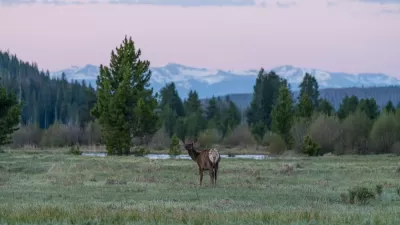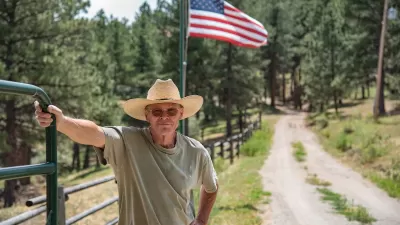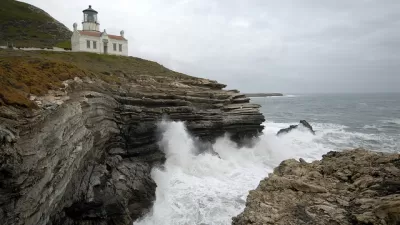That's the question facing the nation's largest environmental organization (not the Sierra Club but The Nature Conservancy) regarding the management of its preserve in Texas. There is no question for Naomi Klein, who writes about it in her new book.
(Updated 08-08-2014) "With more than $6 billion in assets, the conservancy is by far the largest environmental organization in the United States," writes Justin Gillis of The New York Times about the Texas City Prairie Preserve that "is supposed to be a refuge for the Attwater’s prairie chicken, one of the most critically endangered birds in North America."
Gas and oil were being produced on the Texas City property at the time the land was donated, but relatively far from the breeding grounds of the prairie chicken. In 1999, the Nature Conservancy’s Texas chapter decided to permit new drilling there, with the idea of dedicating the money to prairie chicken conservation. It sought out a deal with an energy company and a new well was drilled, about a half-mile from the primary breeding grounds.
Gillis provides a thorough chronology of the nonprofit's energy/conservation dilemma. "The drilling was exposed by The Los Angeles Times in 2002, and explored in more detail a year later by The Washington Post, in a series of articles that raised broad questions about the activities the Nature Conservancy was permitting on conservation lands. A two-year Senate investigation [PDF] sharply criticized the Nature Conservancy."
Which brings us to Naomi Klein's forthcoming book, "This Changes Everything: Capitalism vs. the Climate", to be released next month.
The Nature Conservancy "argues that it has had no choice" other than to permit drilling of a new well in 2007, writes Gillis, due to its original lease. "But the lease contains termination clauses, and Ms. Klein argues in the book that the Nature Conservancy could most likely have stopped the 2007 drilling. The group has earned millions of dollars over the years from gas and oil production on the property, though the 2007 well was not especially lucrative," adds Gillis.
Last word goes to the Attwaters Prairie-Chicken, and it is not a nice ending.
.jpg)
Credit: U.S. Fish and Wildlife Service
Sadly, the endangered bird no longer graces the preserve - the property purchased for it. Gillis writes that "(t)he birds appear to have disappeared from the site, though it is unclear whether the drilling had anything to do with that. The Nature Conservancy contends it took exhaustive steps to protect the birds, which continue to exist in small numbers elsewhere in Texas."
One such place one may be able to see the rare bird is at the Attwater Prairie Chicken National Wildlife Refuge. The initial question asked in this post, "Can Conservation and Oil Drilling Coexist?" was answered by Terry Rossignol, Attwater Prairie Chicken National Wildlife Refuge manager. "We do have oil and gas* facilities operating here since the property was first purchased," he stated in a phone call.
*The post was updated to more accurately describe the facilities in the Attwater Prairie Chicken National Wildlife Refuge.
FULL STORY: Group Earns Oil Income Despite Pledge on Drilling

Planetizen Federal Action Tracker
A weekly monitor of how Trump’s orders and actions are impacting planners and planning in America.

Restaurant Patios Were a Pandemic Win — Why Were They so Hard to Keep?
Social distancing requirements and changes in travel patterns prompted cities to pilot new uses for street and sidewalk space. Then it got complicated.

Map: Where Senate Republicans Want to Sell Your Public Lands
For public land advocates, the Senate Republicans’ proposal to sell millions of acres of public land in the West is “the biggest fight of their careers.”

Maui's Vacation Rental Debate Turns Ugly
Verbal attacks, misinformation campaigns and fistfights plague a high-stakes debate to convert thousands of vacation rentals into long-term housing.

San Francisco Suspends Traffic Calming Amidst Record Deaths
Citing “a challenging fiscal landscape,” the city will cease the program on the heels of 42 traffic deaths, including 24 pedestrians.

California Homeless Arrests, Citations Spike After Ruling
An investigation reveals that anti-homeless actions increased up to 500% after Grants Pass v. Johnson — even in cities claiming no policy change.
Urban Design for Planners 1: Software Tools
This six-course series explores essential urban design concepts using open source software and equips planners with the tools they need to participate fully in the urban design process.
Planning for Universal Design
Learn the tools for implementing Universal Design in planning regulations.
Heyer Gruel & Associates PA
JM Goldson LLC
Custer County Colorado
City of Camden Redevelopment Agency
City of Astoria
Transportation Research & Education Center (TREC) at Portland State University
Camden Redevelopment Agency
City of Claremont
Municipality of Princeton (NJ)





























